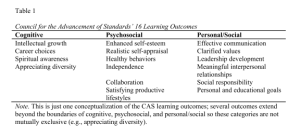Hurt, R. L., & State, C. (2012). An Applied Introduction to Qualitative Research Methods in Academic Advising. NACADA Journal, 32(2010).
This article presents approaches for conducting academic advising research. Presents qualitative and quantitative approaches, however, emphasizes the use of qualitative approaches. Advising as a form of teaching can be evaluated. The writers suggest reluctance on advisors’ part to conduct research due a lack of training in statistical analysis. The writers present frameworks to provide validity to qualitative research.
Qualitative Research
The article includes a description of qualitative research. It begins by outlining four characteristics of valid qualitative research: targeted to address a specific question, have qualities which can be measures, seeking to understand the factors influencing behavior, ensure the researcher is genuinely interested in the people he/she is researching so that a deep connection can be made. Four areas to be mindful of when conducting qualitative research: may last a long span of time, be aware to ensure the story of the data is told and bias is reduced in interpretation, review possible journals that might publish a qualitative (as opposed to quantitative) study, and to possibly incorporate quantitative research (where appropriate).
Three Approaches to Quantitative Research
The writers presented three types of quantitative research approaches and provided examples of how each type can be used. Ethnography is “rooted in cultural anthropology and sociology” (pg. 65). In academic advising, we are trying to describe the student experience. That is an example of an ethnographic study. In my research, I’m interested in describing the learning students may do as a result of advising interactions. This would be supported through this type of research framework. Appreciative Inquiry, is the second type presented. It is described as a form of small group discussion, which leads to the production of the most effective form of “x”. Discussion is guided and attempts to cover four phases: Discovery, Dream, Design, and Destiny. These are described further as identifying the current status of “x”, considering what could be, designing what could be, and finally, creating what could be for “x”. The third type presented is Case Studies. In this type, varying groups are selected by the researcher to discuss a topic. Perhaps this would be different years of students within a major (i.e. Freshman, Sophomores, Juniors, or Seniors) and are guided with open-ended questions to discuss a specific topic. The responses are collected and common themes or further research topics emerge.
Article Critique
This article presented very little literature review. It’s based upon a supposition that academic advisors are reluctant to do quantitative research due to lack of understanding of statistics. That idea lacks any reference. The authors suggest identifying journals that will publish qualitative research, but did not recommend any. That would have been helpful, too. In addition, each of the three types of qualitative research presented did not include significant literature support for the explanation or definition. It could be considered an introductory piece for an advisor beginning to consider research questions. However, further inquiry would need to be done before crafting a research methodology.
Application to My Research
Well-developed research could build more validity into the field of advising. As I have been doing my literature review, I would agree that much of what I am finding is qualitative research. However, I have seen a transition within the day-to-day execution of advising, as we have been integration technology based tools with our practice. We track and record interactions, use data sets to identify which students to reach out, and have fully online tools available. This is developing data sets that will be available (with the appropriate approvals) for quantitative research. As this is evolving, I am hopeful I can access this information for my research.
I’ve administered surveys and led focus groups in the past, with varying degrees of success. The results from the surveys were presented with very basic statistical analysis along with the focus group comments. The focus groups comments helped to put the data from the surveys into context. In my current role, I’ve been working towards the implementation of quantitative survey assessments. The first two I am considering employing include post appointment surveys and pre and post surveys to test knowledge of a specific academic tool. I hope to publish or present findings in the future. I’m hoping that by collecting data from these surveys, I can open a dialogue with students and advisors to find out more about the factors, which might be contributing to what is being measured in the surveys. This article was helpful in that it will present a starting point for how to conduct the qualitative methodologies, which I need to consider. However, I’ll need to conduct a more in-depth literature review before moving forward.
What drew me to the article was that it helped me understand the context in which my research will be presented. If the authors are correct in their assumption about advisors’ capacities for statistical analysis and they are the primary audience for my research, I need to understand how to convey my findings in a way that is accepted and understood.
